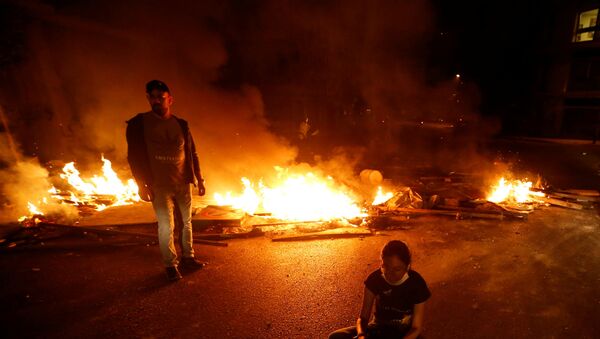Hundreds of people on motorbikes are arriving at the Martyr’s Square and the Riad Al Solh Square. The protesters are burning tires, as well as chanting anti-governmental and anti-US slogans.
Van #4 only passes #LebanonProtests #لبنان_ينتفض pic.twitter.com/iD9uYIrrU3
— Sally Abu Al Joud (@JoudSally) June 11, 2020
PROTESTS HAS STARTED IN #LEBANON: Protests erupt simultaneously in #Beirut , #Tripoli, Saida, Jal el Dib. Many angry over currency devaluation, others against sectarianism, corruption. Woman: “There are no more chances, this is oppression.” pic.twitter.com/PiVpDbHE8E
— Sheeraz Raza (@SheerazRaza) June 11, 2020
Scenes from the city's Martyrs' Square. Beirut — #Lebanonpic.twitter.com/Oo7DRl9SrB
— Anonymous (@YourAnonProtest) June 11, 2020
There are no security officers and servicemen at the site of the protests. According to the An-Nahar newspaper, the army command has ordered the troops not to interfere in the situation. The protesters are also blocking the Hamra Street, which is the central street of Beirut. Lebanese media also report about protests in the cities of Tyre, Tripoli, Sidon, and Baalbek.
Earlier in the day, Prime Minister Hassan Diab announced an emergency government meeting that will be held on early Friday amid the new wave of protests. Last week, the Lebanese pound's exchange rate sank to 5,000 per dollar from 1,500 per dollar in October.
The protests in Lebanon began on 17 October after the government said it would introduce a tax on internet calls made via the WhatsApp messenger. The protests paralyzed the Lebanese economy and urged then-Prime Minister Saad Hariri and his cabinet to resign. The appointment of Diab as the new prime minister in January failed to stop the protests but the situation stabilized in March because of the COVID-19 outbreak. However, sporadic protests and clashes have resumed in April.


